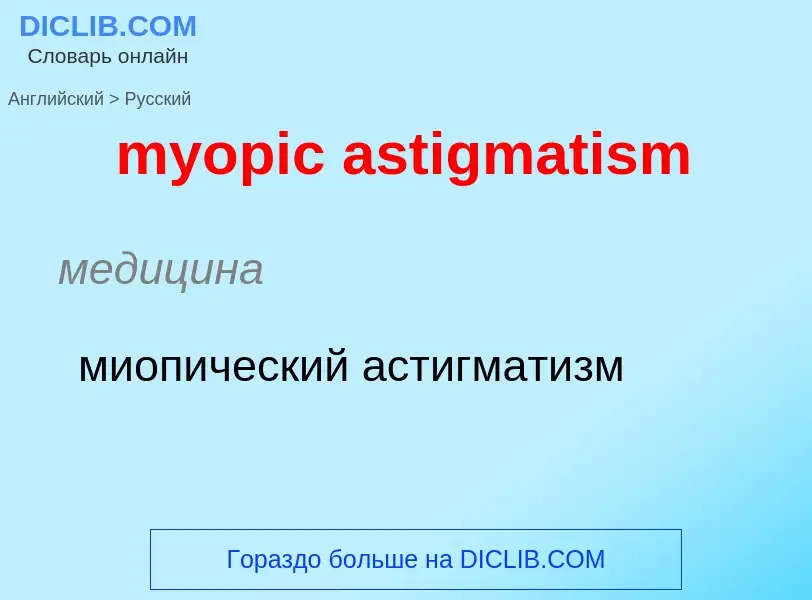ترجمة وتحليل الكلمات عن طريق الذكاء الاصطناعي ChatGPT
في هذه الصفحة يمكنك الحصول على تحليل مفصل لكلمة أو عبارة باستخدام أفضل تقنيات الذكاء الاصطناعي المتوفرة اليوم:
- كيف يتم استخدام الكلمة في اللغة
- تردد الكلمة
- ما إذا كانت الكلمة تستخدم في كثير من الأحيان في اللغة المنطوقة أو المكتوبة
- خيارات الترجمة إلى الروسية أو الإسبانية، على التوالي
- أمثلة على استخدام الكلمة (عدة عبارات مع الترجمة)
- أصل الكلمة
myopic astigmatism - ترجمة إلى الروسية
медицина
миопический астигматизм
[æstig'mætik]
общая лексика
астигматический
прилагательное
общая лексика
видящий всё в искажённом свете
близорукий
подслеповатый
оптика
астигматический
медицина
астигматизм
تعريف
ويكيبيديا

Astigmatism is a type of refractive error due to rotational asymmetry in the eye's refractive power. This results in distorted or blurred vision at any distance. Other symptoms can include eyestrain, headaches, and trouble driving at night. Astigmatism often occurs at birth and can change or develop later in life. If it occurs in early life and is left untreated, it may result in amblyopia.
The cause of astigmatism is unclear; however, it is believed to be partly related to genetic factors. The underlying mechanism involves an irregular curvature of the cornea and protective reaction changes in the lens of the eye, called lens astigmatism, that has the same mechanism as spasm of accommodation. Diagnosis is by an eye examination called autorefractor keratometry (objective, allows to see lens and cornea components of astigmatism) and subjective refraction. But subjective methods are almost always inaccurate if lens astigmatism is not fully removed first with a week of eye drops.
Three treatment options are available: glasses, contact lenses, and surgery. Glasses are the simplest. Contact lenses can provide a wider field of vision and less artifacts than even double aspheric lenses. Refractive surgery permanently changes the shape of the eye and thereby cures astigmatism.
In Europe and Asia, astigmatism affects between 30% and 60% of adults. People of all ages can be affected by astigmatism. Astigmatism was first reported by Thomas Young in 1801.


.png?width=200)
